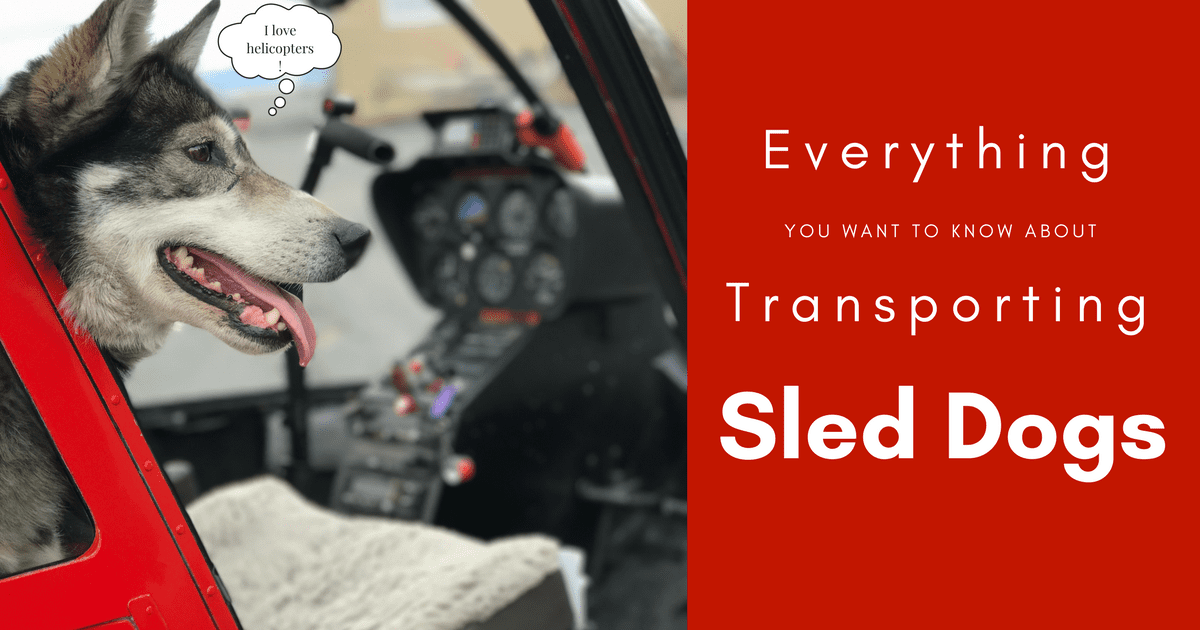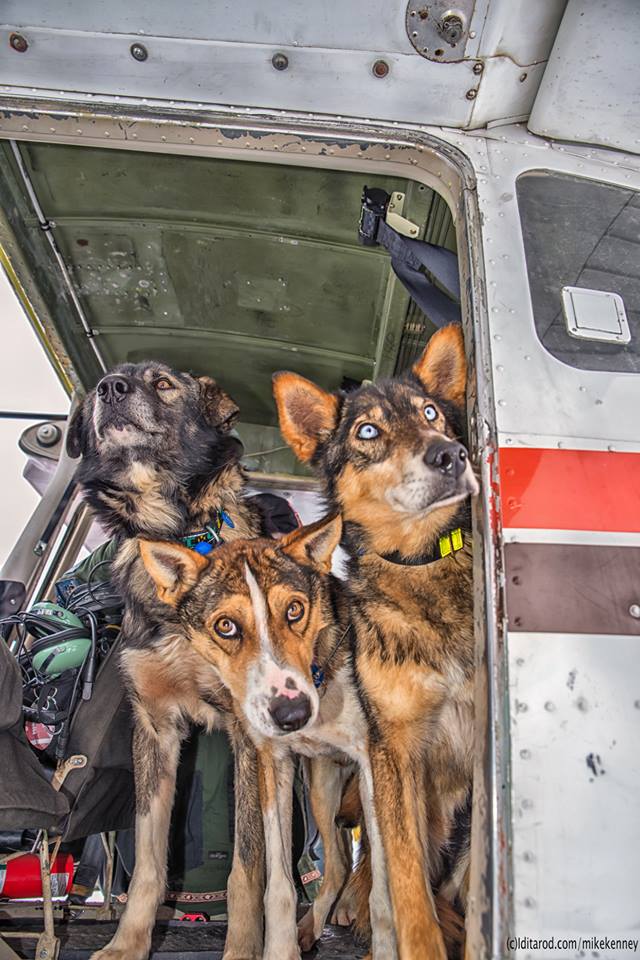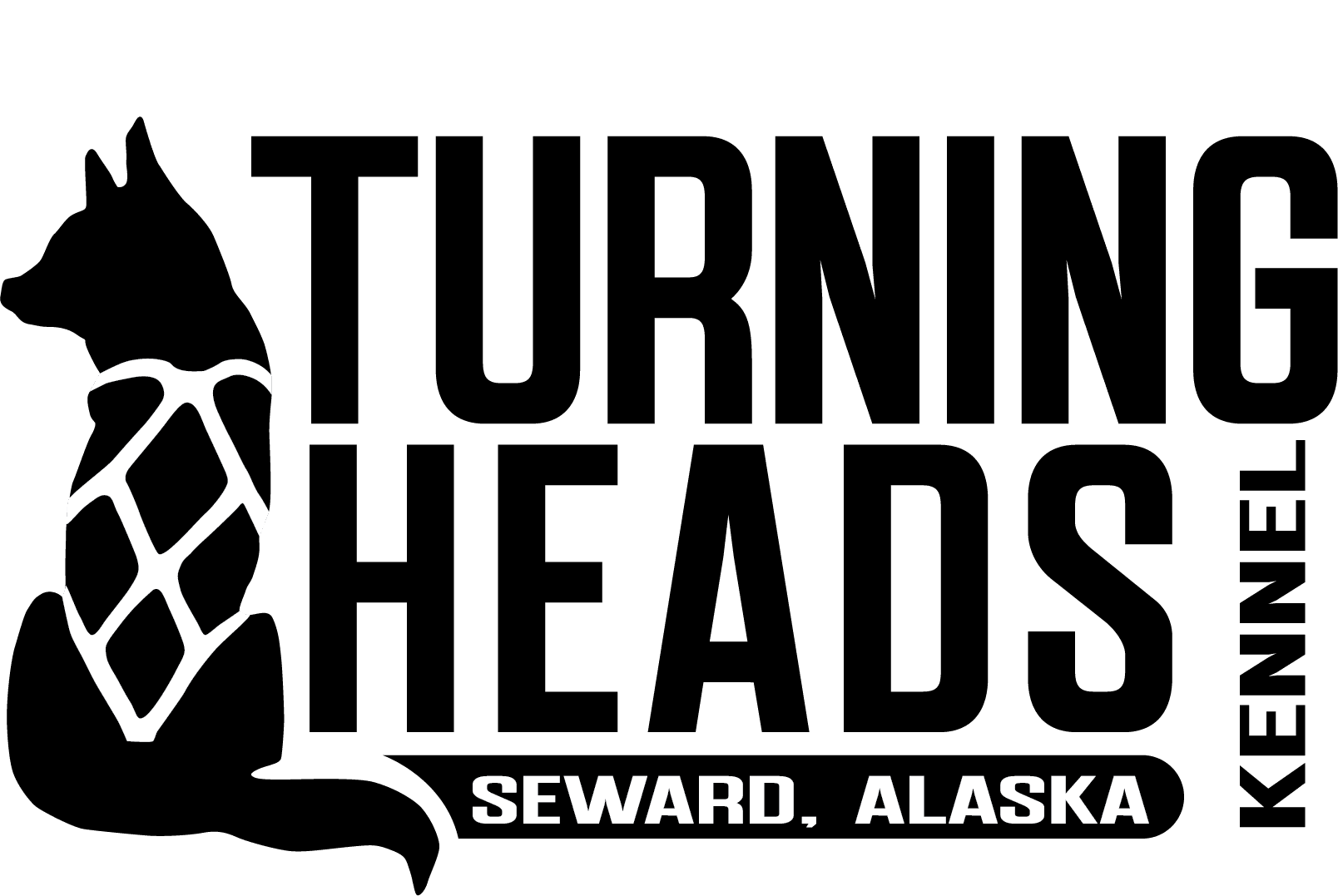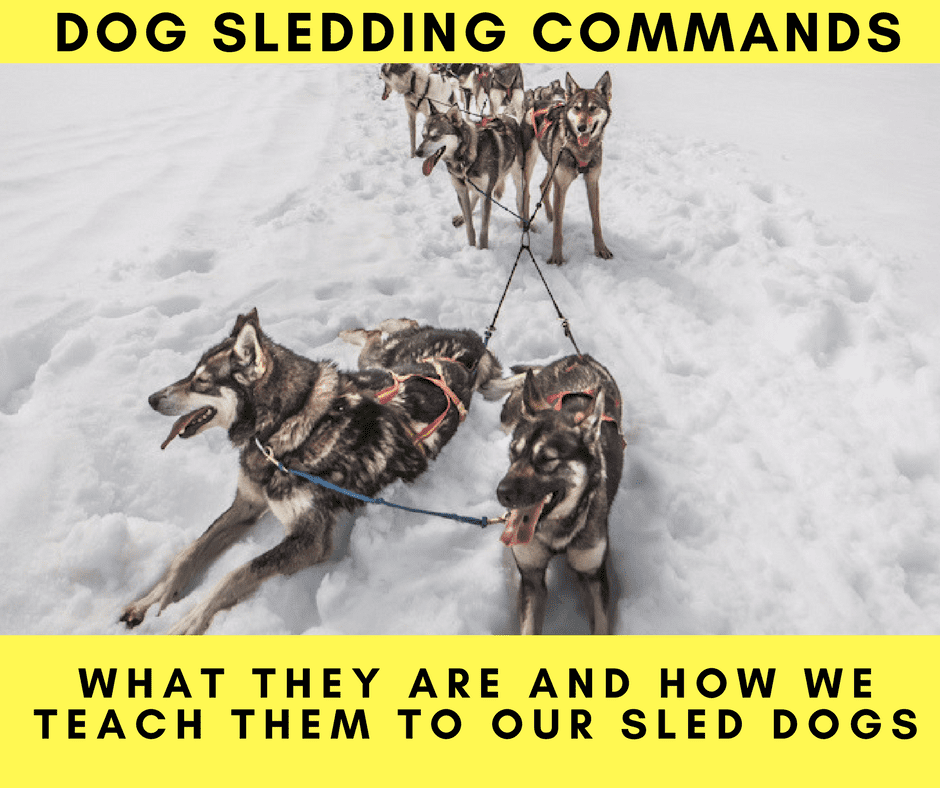
In order to operate various tours, train our dogs and go to different dog sled races, we employ several different methods of transportation. Our sled dogs obviously travel a lot under their own power but did you know that they also rack up their fair share of both road and sky miles? Here’s a look at some of our most common transportation methods for moving our dogs.
Transporting Sled Dogs In The Back Seat Of The Truck
Believe it or not, our sled dogs are just as happy as your pet dog to ride in the back seat of our truck — the only difference is that instead of one dog we may have as many as seven dogs. In fact, I’ve heard that an Iditarod musher showed up with his whole team in the back of a suburban — though that may just be a rumor. Regardless, sled dogs travel well in the back of the truck together because they are well socialized with one another and spend lots of time together.
While this method of travel isn’t always ideal for long road trips or for keeping the truck clean, it is an easy method of moving dogs and can be quite entertaining. Our dogs are very well behaved when loose in a vehicle and often find a place to curl up. When the dogs are loose in the back of the truck, it’s always hilarious pulling into the kennel because the dogs know that they are home and they all want to look out the window — especially if they still have other team mates in the yard. When there are six or seven dogs loose, they climb over each other so they can all see. The truck usually ends up with more than its fair share of dog hair and nose smudges on the windows!
Using Dog Trucks To Move Sled Dogs
Most mushers employ specifically designed vehicles to transport sled dogs long distances safely. Depending on the size of the truck and how it is configured will determine the number of dogs the dog truck can take. A dog truck has several dog boxes, or individual cubbies that the dogs ride in. Depending on the size of the box and the size of the dogs, the dogs may ride two to a compartment. A dog box may replace a truck bed, making it capable of holding as many as twenty four dogs, or it may rest on top of the truck bed and will likely only hold eight or ten dogs.
Dog boxes are a great way for the dogs to travel because the dogs are easily secure and because they can stay warm even in cold temperatures.

Making custom dog boxes is an expensive and lengthy process. If it replaces the truck bed, it is also a commitment to the truck. Dog trucks are common to see at the start of races or in popular training areas.
Dog boxes where dogs are loaded externally are more common than boxes where the dogs are loaded internally. This is simply because it is much quicker to load and unload external boxes. Internal boxes, however, are quite useful in harsh environments; internally loaded dog boxes, it is thought, are generally warmer due to the combined body heat of the sled dogs.
Depending on the musher’s needs and how much they travel they may have either diesel or gas engines. Regardless of engine style used, many trucks use modified exhaust systems and piping to keep the vehicle’s fumes away from the dogs.
Trailer

While dog trucks are great, not everyone wants or is able to convert their truck. Truck beds are useful for hauling things like dogsleds or dog food and many mushers are not interested in giving up that ability. In order to travel with their dogs then, many mushers therefore employ custom trailers to help haul their dogs. This way, they can still use their truck as a truck!
Trailers can either be loaded from the outside or loaded from the inside. Trailers loaded from the outside are much more efficient as it can take considerable time walking individual dogs in and out of trailer.
We have employed two different styles of trailers in our kennel in the past depending on how many dogs we need to haul.
On short trips, we have employed a two place snow machine trailer outfitted with custom boxes. The center of the trailer remains open so we can put a fourwheeler or a dog sled on the middle. This is a quick way for one team to quickly get out onto new trails.

We also have a large 24′ enclosed trailer that has dog boxes built inside. This particular trailer keeps our dogs out of the elements and can be used on extended road trips. Before we had property in Willow, our dogs spent a lot of time on the road so we felt it was important that they were protected. Because it is enclosed, we can also use it during cold spells to bring our dogs in to a warmer environment.

This trailer holds 33 dogs — that’s over half our kennel just in dog boxes. We can even use dog crate to accommodate more team members. When the trailer is full, the body heat left off by the dogs, combined with the straw in their boxes, quickly warms the area and creates a nice cozy environment for the dogs to rest and relax in.
The dry storage of a trailer is also nice when heading to races; our sleds and gear do not get wet riding on top of the truck and we are able to store plenty of dog food.
Bush Planes
Utilizing small aircraft is important in many dog sled races, including the 1000 mile long Iditarod sled dog race. Without the use of small planes to transport sled dogs out of remote checkpoints, many races would not be able to run as effectively. Dog sled racing is great because it takes us to remote places and we are able to do that, in part, because bush planes are used as a means of transporting sled dogs who are, for whatever reason, incapable of continuing on.

During the Iditarod, a volunteer plane crew called the Iditarod Airforce helps with the logistics and flying of any dropped sled dogs. This volunteer crew is vital to the race as it allows mushers to drop dogs who can no longer compete. According to the Iditarod Air Force their “31 volunteer pilots collectively bring 743 years and 420,000 hours of flying experience” and “will fly over 537 dropped and scratched dogs back to Anchorage or one of the [race] hubs.” These amazing volunteers also fly the majority of the musher’s drop bags into the checkpoints too!
For our sled dogs to fly in bush planes, we must provide cable necklines which will be used to secure the dogs during flight. The dogs are secured so that they do no cause problems. The number of dogs taken per flight depends on the size of the plane and if any other cargo or personnel has to be carried. Because of this, mushers are required by the Iditarod rules to carry enough cable necklines for their entire team. This is so that if the team withdraws at any point all the dogs can be safely transported. No one wants a loose dog on an aircraft!
Smaller races may also use bush planes to transport dogs out of remote checkpoints, although it is less common as it is very expensive.
Commercial Airplane
Sled dogs may travel on commercial airlines as a team or individually. Individual dog travel is usually to accompany a musher on a speaking engagement or for personal travel but may also be for re-homing. Many mushers find retirement homes for their sled dogs all over the country where these hard working athletes will get to rest, relax, and enjoy their twilight years. Interested? Learn more about our sled dog retirement program.

Teams will travel together to go to races or to get home from races. Whether you are going to a race or coming home from a race, doesn’t matter — the traveling process is still the same. Each dog must have it’s own airline kennel for transport. In general, we assemble our airline kennels with zip ties because it is easy to assemble and quick to disassemble upon arrival.
In Nome, after Iditarod, we’ve had the opportunity to watch our dogs “get packaged” for transportation several times. After each dog is put in his/her own dog crate, the crates are then loaded four to a pallet with two crates on the bottom and two stacked on top. After this is done, a massive roll of syran wrap is used to go around all the crates securing them together and to the pallet multiple times. This prevents the crates from moving during flight and allows the airline company to use a forklift to move the pallets. It’s a very interesting process to watch and the dogs do not mind at all. In fact, because of all the different ways our dogs routinely travel, it doesn’t even seem to phase them!
Helicopter

In order to get to Godwin glacier in Seward, Alaska where we give glacier dog sledding tours from May through September, our dogs must fly in a helicopter. In order to safely transport our dogs in the helicopter, they generally fly in a custom built crate that can hold several dogs for a short flight.
When we are only transporting a single dog, we often hold the dog and clip it in with a neckline. Believe it or not, many of our dogs enjoy flying. Max, the kennel mascot, especially loves flying as he knows it means a quick trip to visit his friends and visit snow.
How we transport dogs While Mushing
Mushers also must be able to carry a dog or dogs when they are out training or racing. Typically, mushers will leave enough room in their sled to hold a dog; if they do not have room, they will have to make it. This can be done by strapping gear to the outside of the sled. Many mushers may also use trailers specifically designed for carrying dogs or may use a trailer to carry gear so that dogs may be carried in the main part of the sled.
Why Moving Sled Dogs Is Important
Being able to move a team of sled dogs allows us to train in different places and attend races. Taking our dogs to new terrain keeps them interested, allows us to experience new trails, and enjoy different challenges. Racing provides a framework for our training; it gives us a goal to achieve. Even if a musher is not striving to “win” the race, they are trying to improve their team.
In the summer, being able to transport our sled dogs allows us to run tours in unique environments such as on glaciers or in Southeast, Alaska where there is lots of cruise ship tourism but where mushers do not typically live. This allows many people to experience dog sledding for themselves while also providing an income for mushers and exercise for the dogs; it’s a win-win-win!
Our ability to transport our team also ensures that we can keep our dogs safe in the event of a natural disaster. Every kennel should have an evacuation procedure in the event of wildlife fires or flooding. We have experienced flooding in our kennel and have had to evacuate our dogs to ensure their safety.












